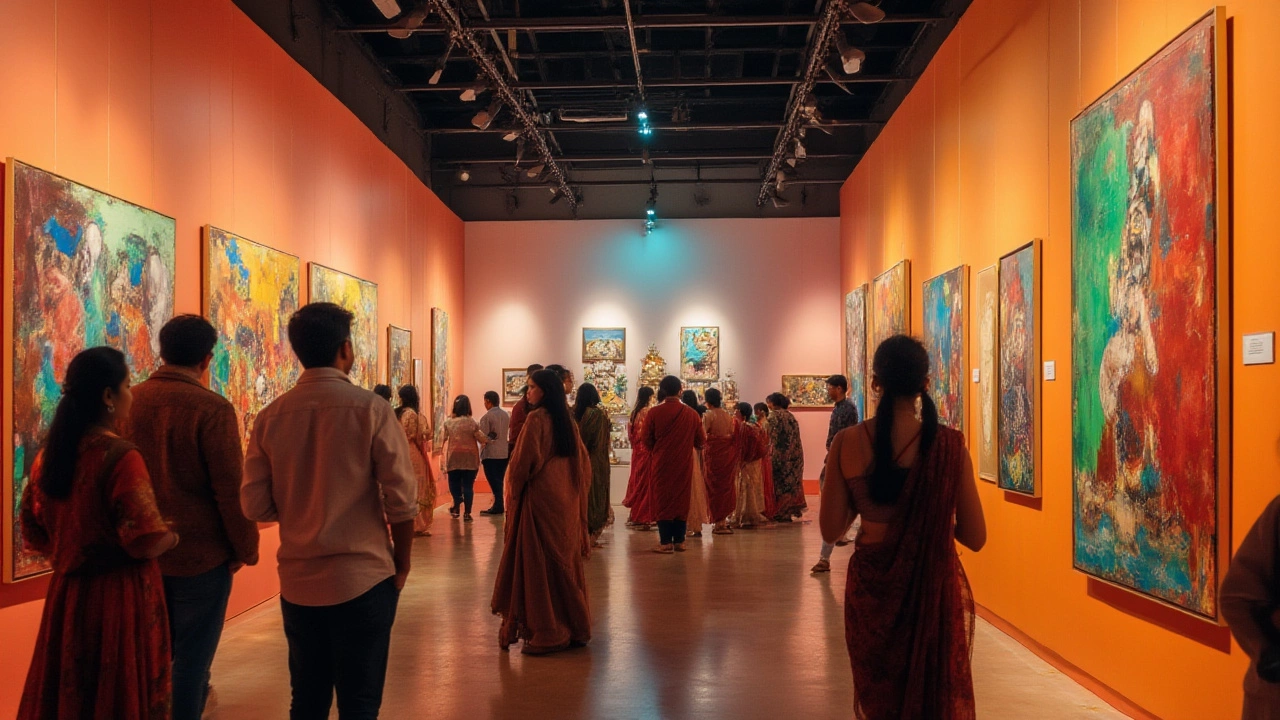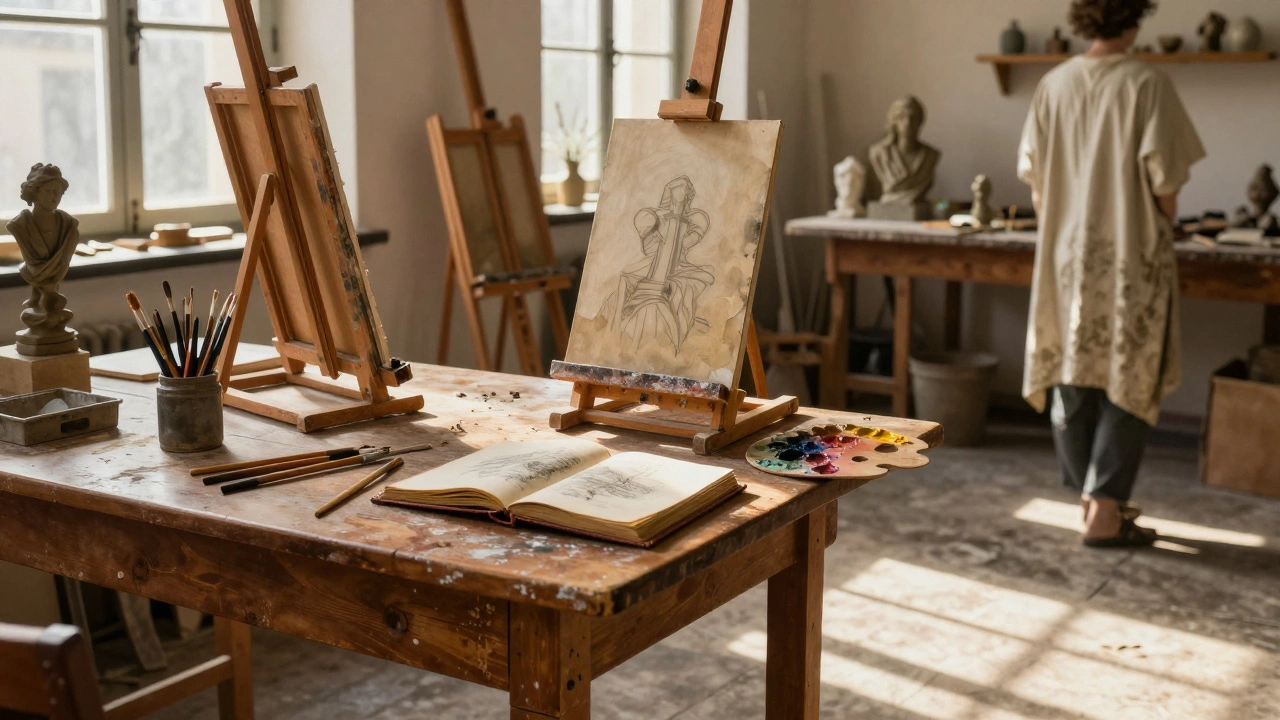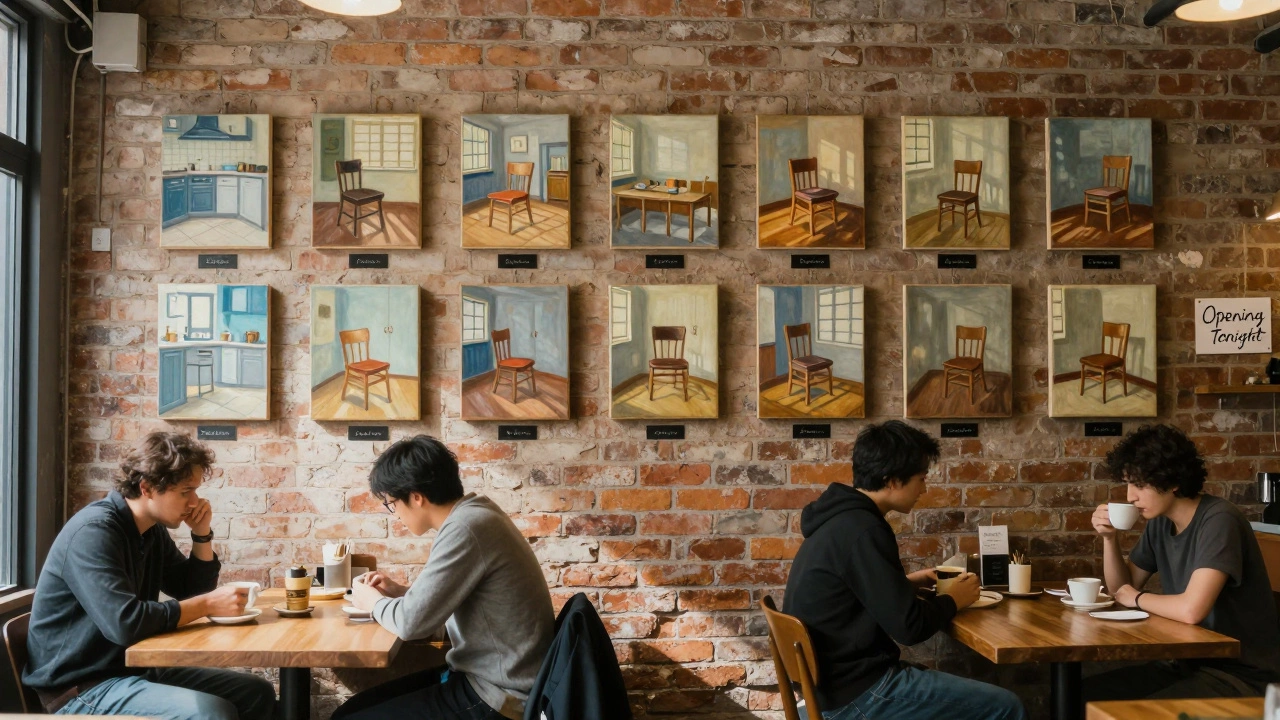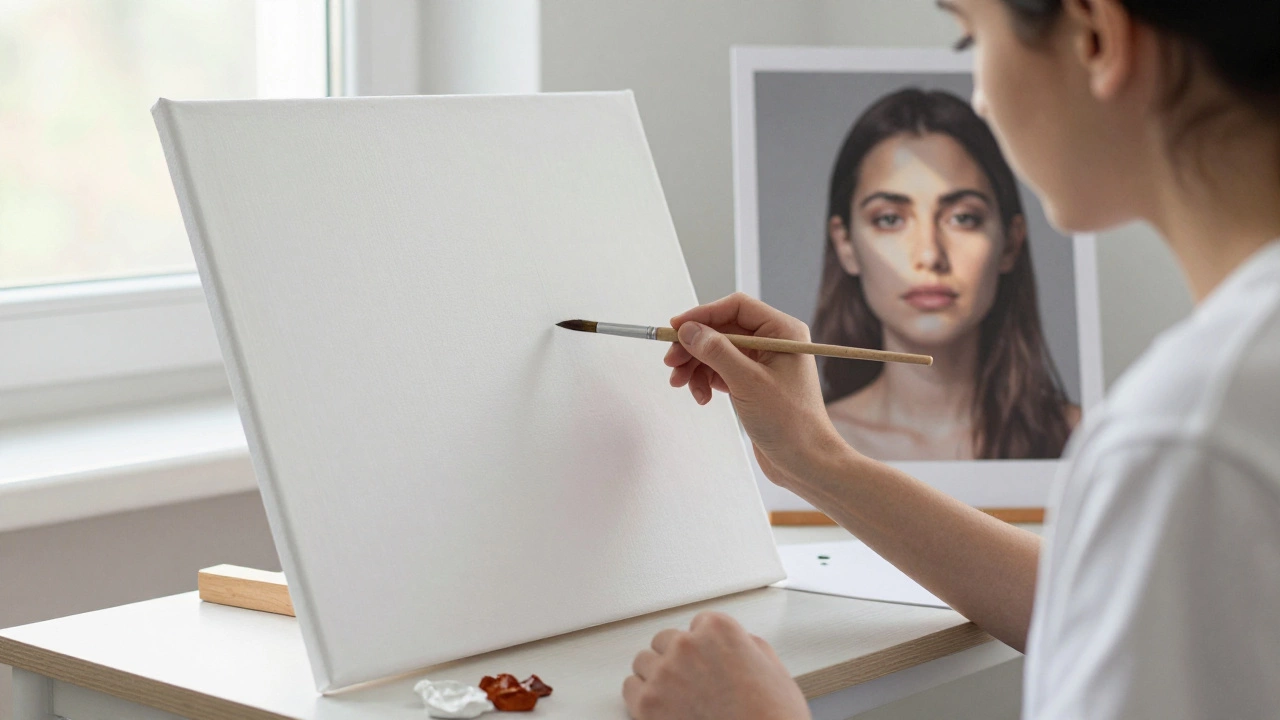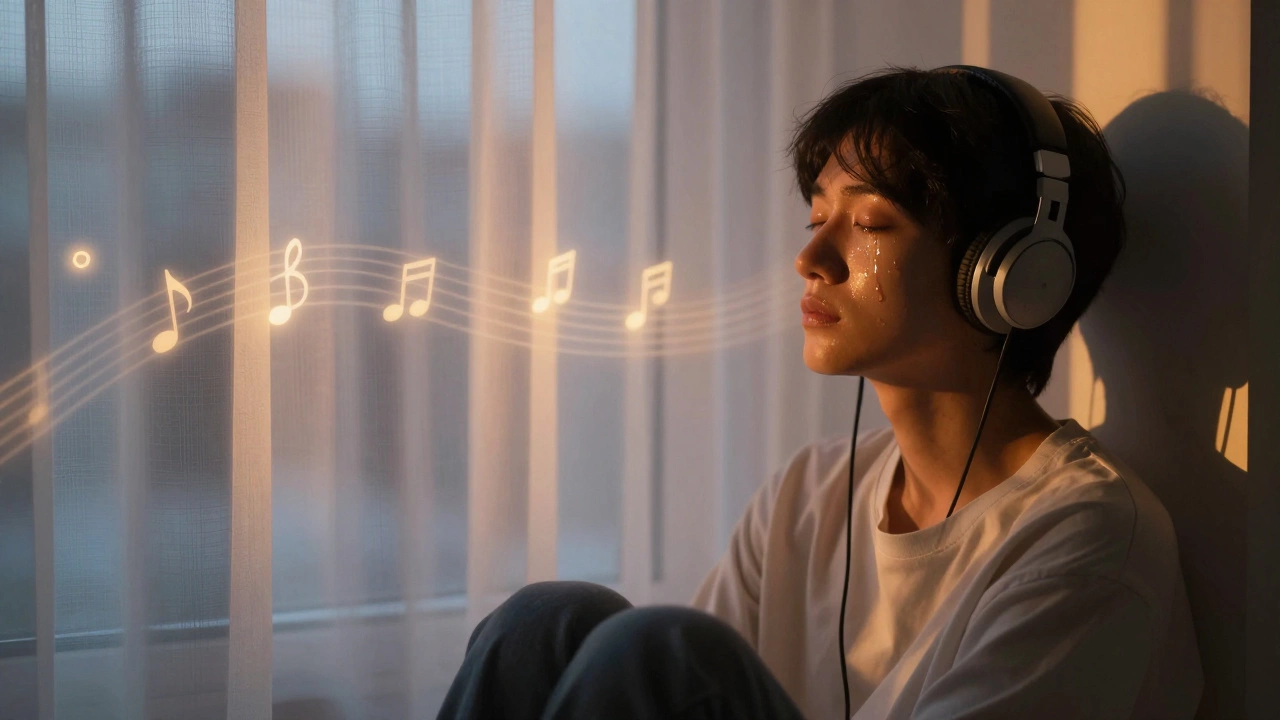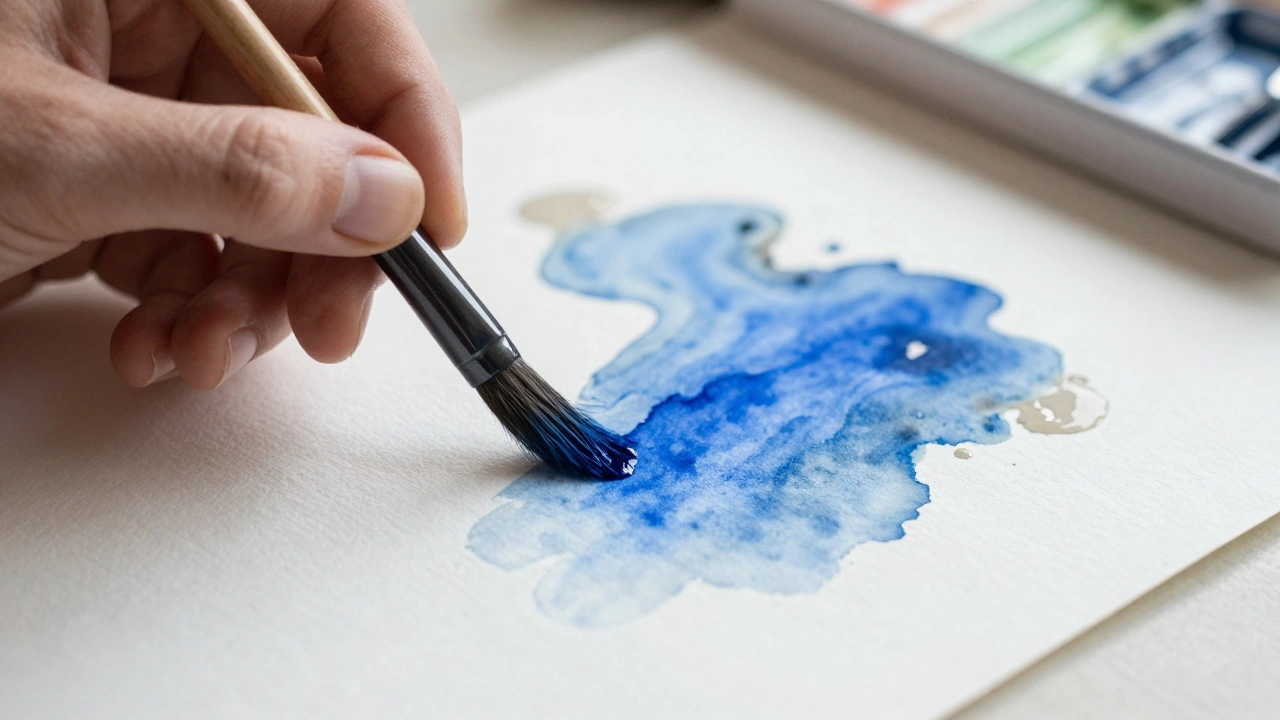If you scroll Instagram, pop into a gallery, or even peek at outdoor murals, the art scene in 2024 is buzzing in unexpected ways. This year feels like art is getting gutsier, greener, and way more digital. There’s a wild mix—from AI-powered canvases to vibrant eco-art that’s basically a love letter to the planet. Studios, city walls, and online spaces are popping off with creativity, and what’s grabbing people’s attention is totally different from five years ago. If you’re curious about what’s selling, what’s being made, and what’s getting shared by millions (sometimes overnight), there’s a good chance it looks nothing like your grandma’s watercolors.
Digital Art and AI Are Changing Everything
This year, you can’t talk about trending art styles without landing on digital art and artificial intelligence. From TikTok shorts to digital canvases that hang on your wall (have you seen those Samsung Frames?), the digital wave is real. Artists are using software to craft everything from photorealistic portraits to abstract compositions. Generative AI art—where programs like Midjourney or DALL-E spin up wild images from text prompts—has exploded. It’s not just about glitchy, spacey images, either. People are learning to guide the tech, creating layered, deeply personal pieces that blend human experience with machine randomness. You’ll spot these at festivals, popping up as NFTs, or as custom-printed wall art in apartments.
And it’s not just fine artists. Designers, brand creators, and even musicians use AI-generated visuals for album covers, stage backdrops, and merchandise. According to a 2024 report by The Art Newspaper, over 40% of new visual content online has been touched by an AI tool at some stage. Collectors who once shied from digital works are trying to get their hands on limited-edition NFT drops or interactive prints. But the digital trend’s not without drama. Some traditional artists worry about originality, and copyright challenges are leading to heated debates.
Still, digital art makes it easier for anyone to become a creator. With free tools and a smartphone, people are building portfolios on Behance or posting animated reels on TikTok. Want a tip? If you want to start making your own digital art, try using free platforms like Canva or experiment with generative image tools. You might be surprised by what you come up with—and how many other people are jumping in, too.
Here’s a quick look at how digital art platforms are stacking up in 2024:
| Platform | Monthly Users (Millions) | Main Focus |
|---|---|---|
| Midjourney | 12 | Generative AI Art |
| Procreate | 16 | Digital Illustration |
| OpenSea | 7 | NFT Marketplace |
Digital art is more accessible and less intimidating than ever. Even big-name galleries are hosting digital exhibitions and inviting their audiences to vote or interact through apps. As the Museum of Modern Art’s digital curator, Sandra Elkin, said in a spring 2024 interview:
“We’re seeing the line between artist and audience blur in real time, and that’s opening the doors to new ideas every day.”
Eco-Art and Upcycling: Art that Cares About the Planet
The planet’s on everybody’s mind, and this year’s art trends 2024 are super-charged with green energy (and not just in the color palette). Eco-art, which uses sustainable or recycled materials, isn’t just for science fairs anymore. Artists are crafting beautiful, large-scale installations from plastic ocean waste, bottle caps, or even old clothes. You’ll see entire gallery floors turned into forests made from fallen branches or interactive art where you plant seeds or swap old items. Upcycled art—taking trash and turning it into a treasure—is a real conversation starter at pop-up shows and street art festivals.
One standout in 2024 is artist Maya Tan’s ‘Plastic Wave’ installation, built using 800 pounds of plastic pulled from beaches in California. The piece doubled as a space for school kids to learn about ocean pollution, mixing activism with hands-on creativity. And it’s gaining traction: according to the 2024 Global Art Market Report, upcycled and eco-friendly art sales rose by 22% over the last 12 months.
Tips if you’re interested: look for eco-art at your local art fairs or on Instagram, where hashtags like #EcoArt2024 are hotbeds for fresh ideas. If you want to try it yourself, start small—maybe a colorful bottlecap mosaic in your backyard or turning outgrown jeans into textile wall hangings. Local recycling centers or thrift stores are gold mines for materials. The best part? You don’t need a fat budget, just some imagination and a bit of glue (or even better, eco-friendly adhesives).
Eco-artists are also collaborating more. You’ll find joint projects where muralists, designers, and engineers pool their talents to make public art that cleans air using moss walls or solar-powered light installations. Some cities are even sponsoring competitions to turn alleyways or rooftops into green art zones. This isn’t just a trend; it feels like a movement, and with climate change creeping into every conversation, expect eco-art to keep growing.
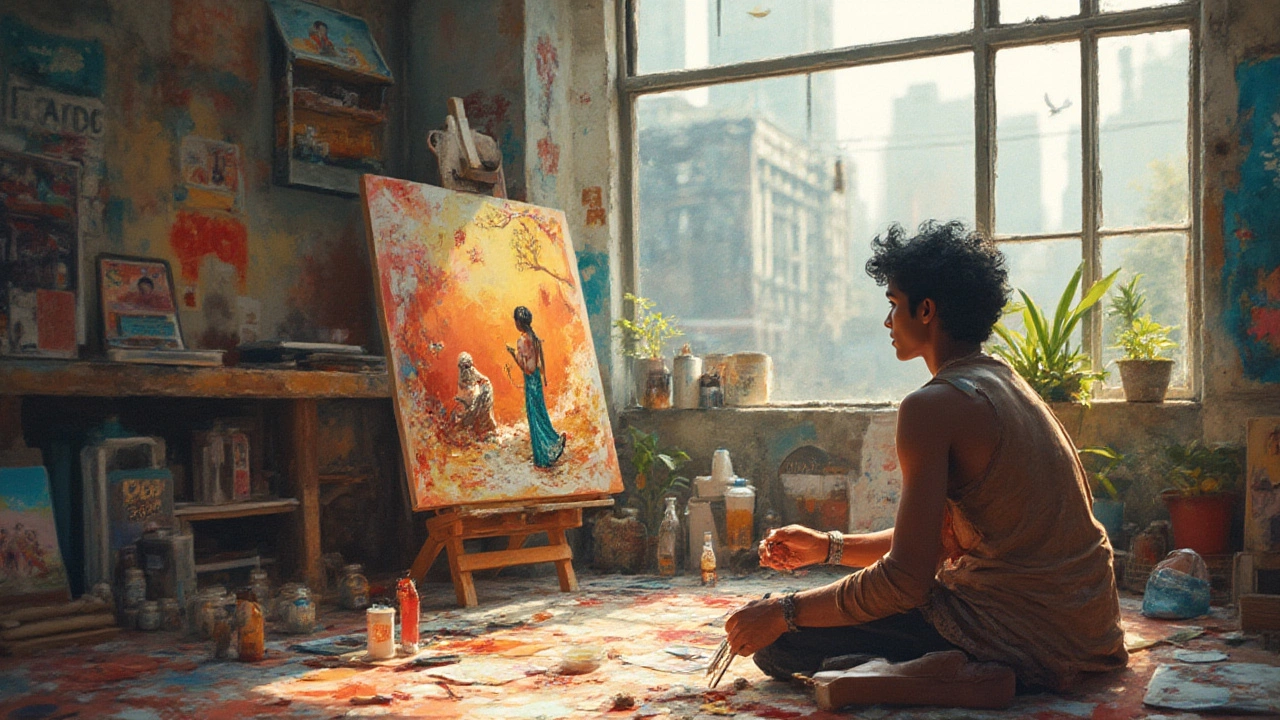
Figurative Painting and Bold Portraits Are Back
For all the talk about AI and digital buzz, hand-painted art is making a loud comeback—especially figurative work that tells a story or shows attitude. 2024’s galleries and art fairs are seeing a new generation of painters who love rich colors, dynamic poses, and big personalities. Social media loves these too, especially when there’s an eye-popping twist: think electric blue shadows or faces made up of swirling patterns.
What’s interesting is how artists are blending realism with surrealism. Painters like Riya Alston and Luca Bianchi are getting famous for portraits that seem familiar but have a dream-like edge. You’ll see hands painted to look like petals or faces floating over city landscapes. It’s about style, sure, but also about identity and the feeling that life is a bit strange right now (which—let’s be real—it kind of is).
Collectors and casual fans are drawn to pieces that stand out online and in real spaces. Pop-up exhibitions have queues around the block if the work looks good on “the grid.” Instagram polls from ArtBasel Miami Beach 2024 reflected that 65% of attendees were most interested in large-format, figurative artworks over abstract pieces. People aren’t just hanging these paintings at home; they’re printing them on shirts or using them as digital avatars.
If you’re looking to buy or just follow the scene, look for up-and-coming artists at university shows or online platforms like Artsy. Try searching for pieces with bold color blocks or unexpected scenery—these tend to gather attention at both virtual and physical auctions. And don’t be afraid to support local artists experimenting with portraits or self-portraits. They often have the freshest takes on culture and identity.
Interactive, Immersive, and Collective Art Experiences
Sitting quietly in a white-walled gallery? Not so much in 2024. This year, art wants you to move, touch, play, or even become part of the piece. Immersive art experiences, like teamLab’s mind-bending digital gardens or Yayoi Kusama’s glowing infinity rooms, set off a wave of immersive pop-ups in major cities—think rooms full of balloons, digital rain you can manipulate, and spaces that transform based on your heart rate via wearable tech.
Interactive art isn’t just for high-end museums anymore. The number of community-organized light festivals doubled from 2021 to 2024, according to the Urban Creative Institute’s January 2024 survey, and no wonder: families, teens, and even grandparents want more than just to stand and stare. Art festivals like LUX Helsinki and Montreal’s MTL en Arts showcased crowd-sourced murals: passersby added brushstrokes, stickers, or snippets of poetry, building a piece together. The trend is about connection—not just with art, but with other people in the space.
Some exhibits go even further, letting you scan QR codes to unlock AR layers or vote on how the piece evolves during the show. A great tip? If you spot a poster or social media ad for an ‘immersive’ show, jump on tickets early. They sell out faster than traditional shows. Even theaters are joining in, using projection mapping and audience-driven soundscapes to blur the line between performance and visual art.
If you want to make your own interactive art, try starting with simple mixed media projects or team up with a friend who’s into coding, music, or sculpture. There’s no set recipe—just the idea of getting people to feel something more than just awe. As gallery director Enzo Perez said during a 2024 TEDx talk:
“Art is at its most powerful when it’s a conversation, not a monologue.”That’s the vibe in 2024: art is something to do, not just to look at.
